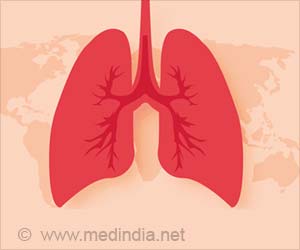A recent report has said that swine flu causes damage of the complete airway right into the lungs, similar to the viruses which triggered the notorius 1918 and 1957 influenza pandemics.
Scientists from the National Institutes of Health (NIH) and New York City's chief medical examiner's office examined microscope slides of tissue from 34 people who died of pandemic swine flu earlier this year.They found "a spectrum of damage in both the upper and lower respiratory tracts," said Jeffery Taubenberger, one of the researchers on the study.
In all cases, the upper respiratory tract -- the trachea and bronchial tubes -- were inflamed and sometimes severely damaged.
In 18 cases, or more than half, damage was seen lower down, in the finer branches of the bronchial tubes, and in 25 cases, or nearly three-quarters of the study sample, the researchers found damage to the small globular air sacs, or alveoli, of the lungs.
"This pattern of pathology in the airway tissues is similar to that reported in victims of both the 1918 and 1957 influenza pandemics," said Taubenberger, a virus specialist at the National Institutes of Allergy and Infectious Diseases (NIAID).
But it differed from seasonal flu, which "causes most damage in the trachea and the bronchial tree, not deep in the lungs," Taubenberger told AFP.
Advertisement
Only one of the fatalities in the study sample was over the age of 60. Twenty-four of the 34 were under 50.
Advertisement
But the 2009 swine flu pandemic added a new chronic health condition to the list: obesity.
Seventy-two percent of the adults and adolescents in the study were obese and nearly half were morbidly obese.
"Obesity was not identified in past pandemics, and it's unclear what the link is between obesity and flu," Taubenberger said.
The study was published in the online edition of the Archives of Pathology and Laboratory Medicine.
Source-AFP
SAV











